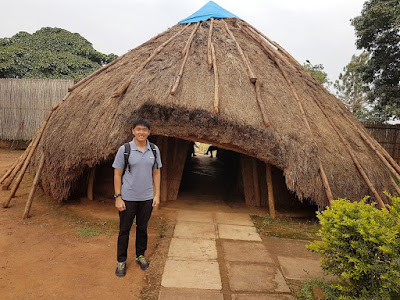JPN: Nagasaki Chinatown
10-13 Shinchimachi, Nagasaki, Japan
Nagasaki Chinatown is the oldest among the three designated Chinatowns in Japan. Most of the Chinese members there are of Fuzhounese descent. In 1980, Nagasaki and Fuzhou established ties as sister cities to recognise the historical connections between them and Fuzhounese immigrant community.
JPN: Huis Ten Bosch (Part 1)
JPN: Huis Ten Bosch (Part 2)
JPN: APA Hotel Nagasaki Ekimae
JPN: Nagasaki Ropeway
JPN: Mount Inasa
JPN: Hypocenter Park & Peace Park
JPN: Champon Museum
JPN: Nagasaki Chinatown <YOU ARE HERE!>
JPN: Nagasaki Downtown
JPN: Nagasaki Airport
JPN: Skymark Airlines BC148 (Economy)
The town was home for many Chinese sailors and traders from the 15th to the 19th century.





Nagasaki Chinatown is the oldest among the three designated Chinatowns in Japan. Most of the Chinese members there are of Fuzhounese descent. In 1980, Nagasaki and Fuzhou established ties as sister cities to recognise the historical connections between them and Fuzhounese immigrant community.
---
JPN: Huis Ten Bosch (Part 1)
JPN: Huis Ten Bosch (Part 2)
JPN: APA Hotel Nagasaki Ekimae
JPN: Nagasaki Ropeway
JPN: Mount Inasa
JPN: Hypocenter Park & Peace Park
JPN: Champon Museum
JPN: Nagasaki Chinatown <YOU ARE HERE!>
JPN: Nagasaki Downtown
JPN: Nagasaki Airport
JPN: Skymark Airlines BC148 (Economy)
JPN: Kobe City Hall Observation Deck
JPN: Meriken Park
JPN: Nankinmachi
JPN: Kobe Anpanman Children’s Museum and Mall
JPN: Kobe Oji Zoo (Part 1)
JPN: Kobe Oji Zoo (Part 2)
JPN: Rokko Cable Car
JPN: Mount Rokko
JPN: Kobe Luminarie 2019
JPN: Kobe Downtown
JPN: Hasegawa Rinku Guest House West
JPN: Kansai International Airport
JPN: Meriken Park
JPN: Nankinmachi
JPN: Kobe Anpanman Children’s Museum and Mall
JPN: Kobe Oji Zoo (Part 1)
JPN: Kobe Oji Zoo (Part 2)
JPN: Rokko Cable Car
JPN: Mount Rokko
JPN: Kobe Luminarie 2019
JPN: Kobe Downtown
JPN: Hasegawa Rinku Guest House West
JPN: Kansai International Airport
---
The town was home for many Chinese sailors and traders from the 15th to the 19th century.
 |
| Dragons are certainly inseparable from the Chinese culture. |
The district stretches over approximately one city block, now housing a variety of shops and restaurants. It was pretty quiet for most of the parts when my BFFs and I were there.
 |
| Known as Shinchi (lit. New Land), Nagasaki Chinatown was initially a reclaimed island, but it's no longer the case now due to land reclamation. |
 |
| In the Chinese mythology, phoenix is the king of all brids, a symbol of high virtue and grace. |
 |
| I suppose quite a number of restaurants there are closed between lunch and dinner hours. |


 |
| Bubble tea, anyone? It can be found in many places in Japan now. |
We did window shopping at a few shops.
 |
| Have you tried almond-flavoured soft serve ice cream? It's good! |

It's surely much more lively when you're around during Chinese New Year as the area is the centre of the annual Nagasaki Lantern Festival.
After spending less than half an hour there, we went out to explore the surrounding area.
 |
| There was a Christmas decoration near one of the gates. |
 |
| What image do you see? |
Our feet brought us to the nearby Former Chinese Settlement.
 |
| The Chinese people were forced to stay in the area during the Edo period. Those found outside of the town at certain times would be arrested. |

 |
| Shoes, anyone? |
We came across a Fukken Kaikan Hall.
 |
| While that structure remains, the main hall was unfortunately destroyed by the 1945 atomic bomb. |

We also came across a Kannon-do with quite a nice illustration of the settlement in the past at its entrance.
Do share if you've attended the Nagasaki Lantern Festival.



















Comments
Post a Comment